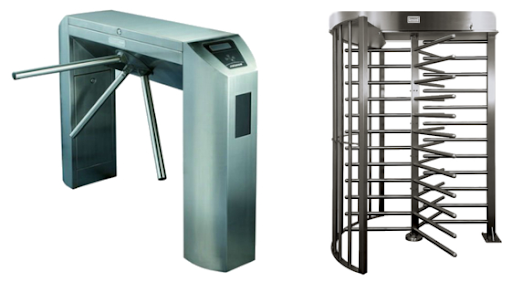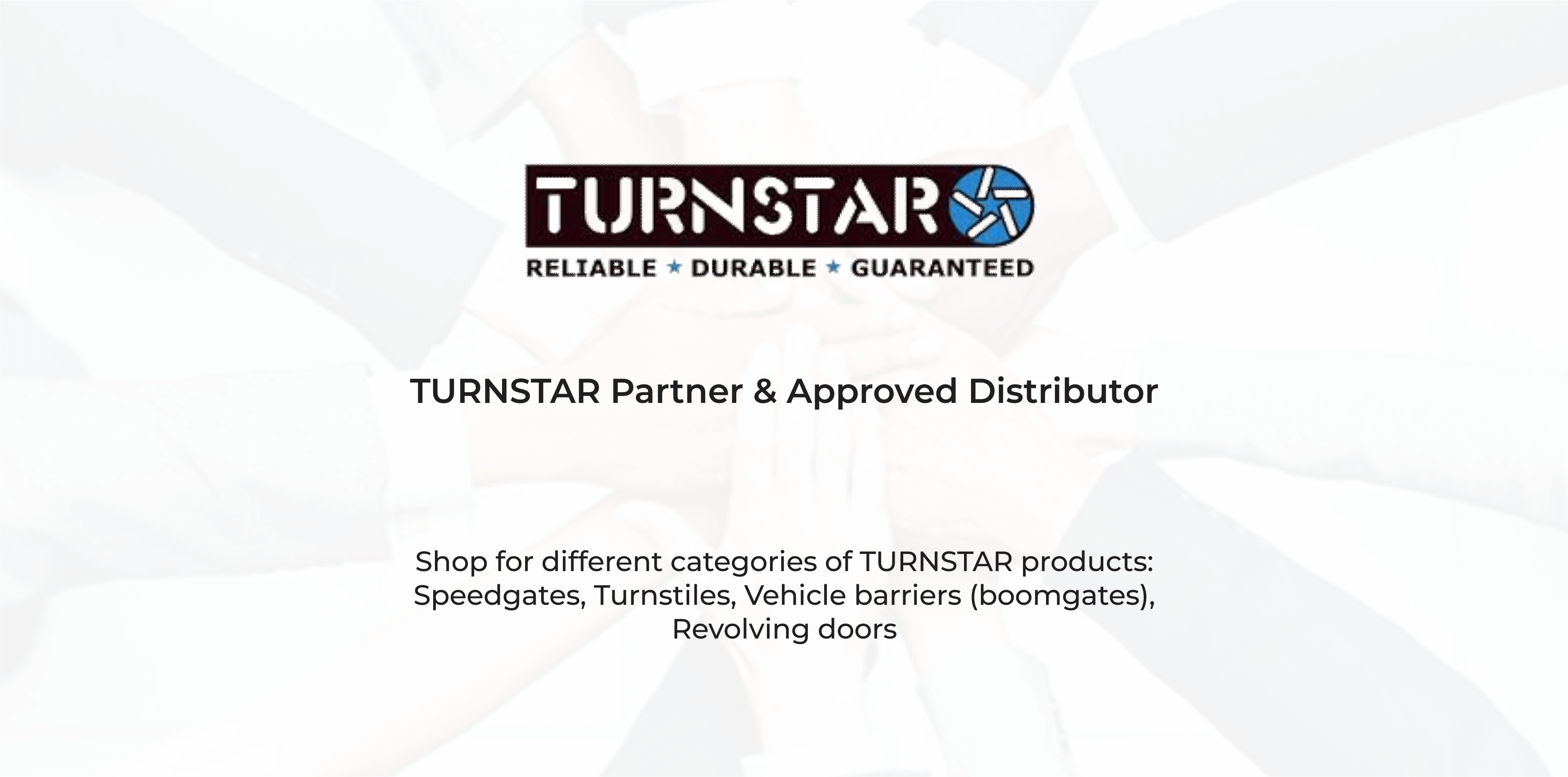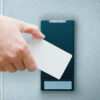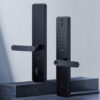
Turnstiles and Barrier gates have been used for decades to improve security and keep attackers away from building owners’ possessions.
Turnstile gates are a common variety of security gates used.
They’re made such that just one authorized individual can pass through at a time.
This is why they have proved to be very useful in securing various high-risk premises such as banks, prisons, military bases, government buildings, and hotels.
If your building is coordinated with other security frameworks, you might also be interested in learning the benefits of turnstiles to your organization.
Turnstiles, on the other hand, are not all created equal. If you want to install a turnstile gate, you must first determine which sort of turnstile is best for your security needs..
Let’s learn a bit more about the different types of turnstiles.

1. Waist-High Turnstiles
As the name suggests, these turnstiles are waist-high in length. They are also called half-height turnstiles. Usually, you need to use an electronic key or a bar-coded ticket or a pass to open the barrier.
These turnstiles can help you build a multi-lane access control system to control pedestrian traffic in public and private premises.
Waist-high turnstiles can further be divided into different types depending on the barrier technology used.
2. Optical Barrier Turnstiles
These turnstiles use optical sensors such as infrared beams instead of physical barriers to prevent unauthorized access. If the system detects an unauthorized entry, it sets off an alarm, prompting the security personnel to step in.
You will often see these turnstiles in places where using a physical barrier is deemed unaesthetic or unnecessary. These include office buildings, hotel lobbies, sports stadiums, and other public places.
3. Drop Arm or Tripod Turnstiles
These turnstiles are often a combination of an optical sensor and a tripod or drop arm barrier. They may have single, double, or triple (tripod) arm barriers. The arms drop into recesses in the cabinet when they sense an authorized entry.
The tripod barrier, however, rotates vertically, allowing one person to pass at a time. Tripod turnstiles are found at train stations, bus terminals, airports, public parking lots, and parks.
4. Sliding Barrier Turnstiles
These waist-high turnstiles have sliding flaps that move back into the sliding space. The slick design of glass flaps and their working principle makes these turnstiles ideal for aesthetic indoors such as hotel and public building lobbies.
Depending on the model, the anti-tailgating function may be available. However, people may be able to pass items or jump over such turnstiles. But, they can be used to build a wheelchair-friendly access control system.
5. Swing Barrier Turnstiles
These half-height turnstiles have optical sensors and swing barriers made from high-quality stainless steel or toughened glass. You can integrate these turnstiles into ticketing systems and also access control management systems.
When the optical sensors detect a valid entry pass (electronic key or bar-coded tickets), the barriers swing open, allowing the person to pass. To prevent people from jumping over the turnstile or carrying items over it, you can use full-height swing gates.
6. Full-Height Turnstiles
Full-height turnstiles, as the name suggests, have barriers extending up to seven feet from the floor. These turnstiles function just like a revolving door. Unlike a regular revolving door, however, full-height turnstiles can prevent unauthorized access.
The revolving barrier is made of high-quality stainless steel. But, toughened glass barriers are equally common. Full-height turnstiles are also safer compared to waist-high turnstiles as intruders can’t jump over them. In other words, you can pass through these turnstiles only if you have an authorized access pass or keycard.
You can’t hold and keep full-height turnstiles open, which prevents intruders from gaining access to your building. Full-height turnstiles also prevent tailgating as they allow only one person to pass through at a time. They often enable people to move in only one direction. However, they also have operational flexibility, allowing bidirectional movement. They have a vandalism-proof design, making them less vulnerable to damage.
All these features make full-height turnstiles suitable for high-security buildings, especially for applications with unmanned areas. Bank volts, government building with high-security risk, prisons, industrial plants, military installations, power plants, airports, and even parking sites use full-height turnstiles to prevent unauthorized access.
Whichever type is right for your setting, contact Advance Access to discuss the range of entrance and exit solutions, including customizable options. All are highly effective at improving security and crowd safety.

Conclusion
As you can see, there are several different types of turnstiles. Each one comes with distinct features. You can choose the one that suits your security goals and budget. Hopefully, knowing about these major types of turnstiles will help speed up your selection process. If you are still not sure which turnstile to buy, tell us about your requirements, and we can help you make an informed decision.
Need a free consultation and risk assessment? Contact SecurTech
Send a WhatsApp message



